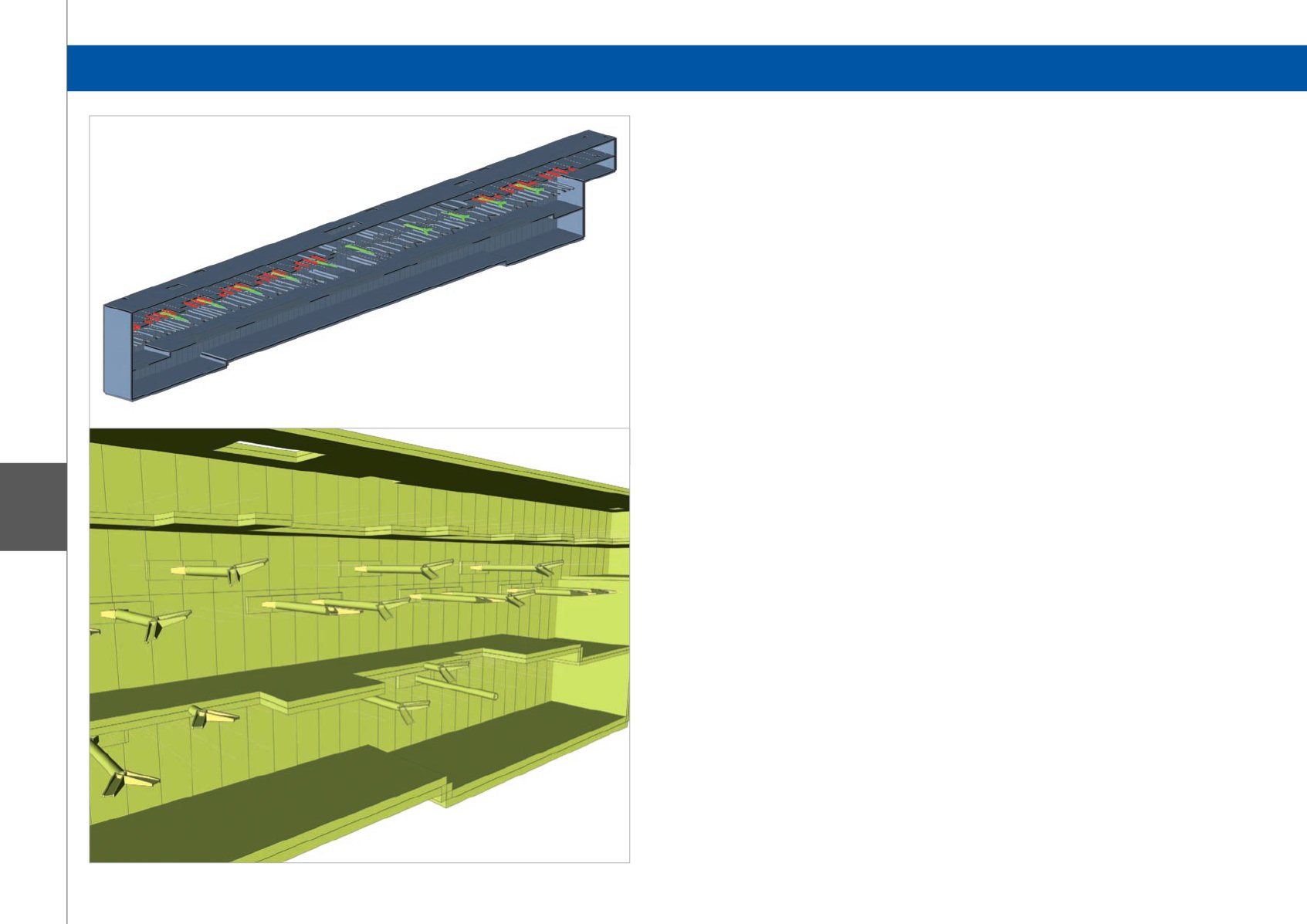
164
X2
Category 2: Civil Structures
Project description
Ceintuurbaan Station is part of the North/South line
project, situated in the historic centre of Amsterdam.
The scope of the project contains eight stations and
connects the northern and southern districts with the
city centre.
The metro line measures approximately 10 km in length,
divided into an underground section of 7 km and a
bored tunnel of 3 km long. The metro line runs from the
above-ground Buikslotermeerplein Station via a semi-
sunken route and is connected with the Central Station
by an immersed tunnel below the IJmeer. From the
Central Station, the metro line continues its route via the
stations Rokin, Vijzelgracht and Ceintuurbaan. These
stations are all constructed at an average depth of 30 m
below the surface and are connected by a bored tunnel.
At Europaplein Station the metro arrives above the
ground and is connected to the existing metro network
at Zuid/WTC Station.
Structure and building method
Ceintuurbaan Station is 230 m long and has an average
width of 11 m. Due to the limited space available
between the buildings at street level, the station is
designed for two bored tunnels, which are located
above each other. The station has two main entrances
through which passengers can enter the station at
NAP +0.6 m.
From the concourse level at NAP -6.8 m, passengers
(approximately 42,500 a day) are divided over the two
lower platforms by an escalator or elevator.
To minimise the duration of the impact on traffic and
the surroundings, the station is built by using the cut &
cover method. First, the diaphragm walls, 1.2 m thick,
and the roof were made. Below the roof structure more
excavation took place, while constructing several floors
and metro platforms. To guarantee the vertical stability
of the deepest section, the last couple of metres were
excavated under compressed air, starting from the
intermediate floor at NAP -18.8 m. After the completion
of the foundation slab, the concrete structure was ready
to be connected with the bored tunnels.
Horizontal stability of the structure
During the excavation process, the diaphragm walls
were supported by temporary steel struts at different
levels to secure horizontal stability. Due to its great
depth and the presence of several openings in the floor
slabs, the combination of diaphragm and retention walls
also has to be supported by additional struts in the final
phase. These struts are applied at five different levels.
The permanent steel struts are installed and
prestressed in the presence of the temporary steel
struts and floor slabs. The temporary steel struts are
removed in different phases. During removal, the
deflection of the steel struts is monitored by strain
gauges and extensometers. With the information
obtained from these measuring instruments, the forces
per construction stage can be determined.
Use of Scia Engineer
To verify these results, a 3D model of the station is
created in Scia Engineer. With the use of the module
‘construction stages’, the influence of the several
construction phases could be predicted. This gave the
opportunity to verify the retrieved information from the
monitoring. Furthermore, the model made it possible to
anticipate critical situations and to prevent the forces
from exceeding the design values in the consecutive
stages.
Software: Scia Engineer
Ceintuurbaan Station, North/South Metro Line - Amsterdam, The Netherlands


